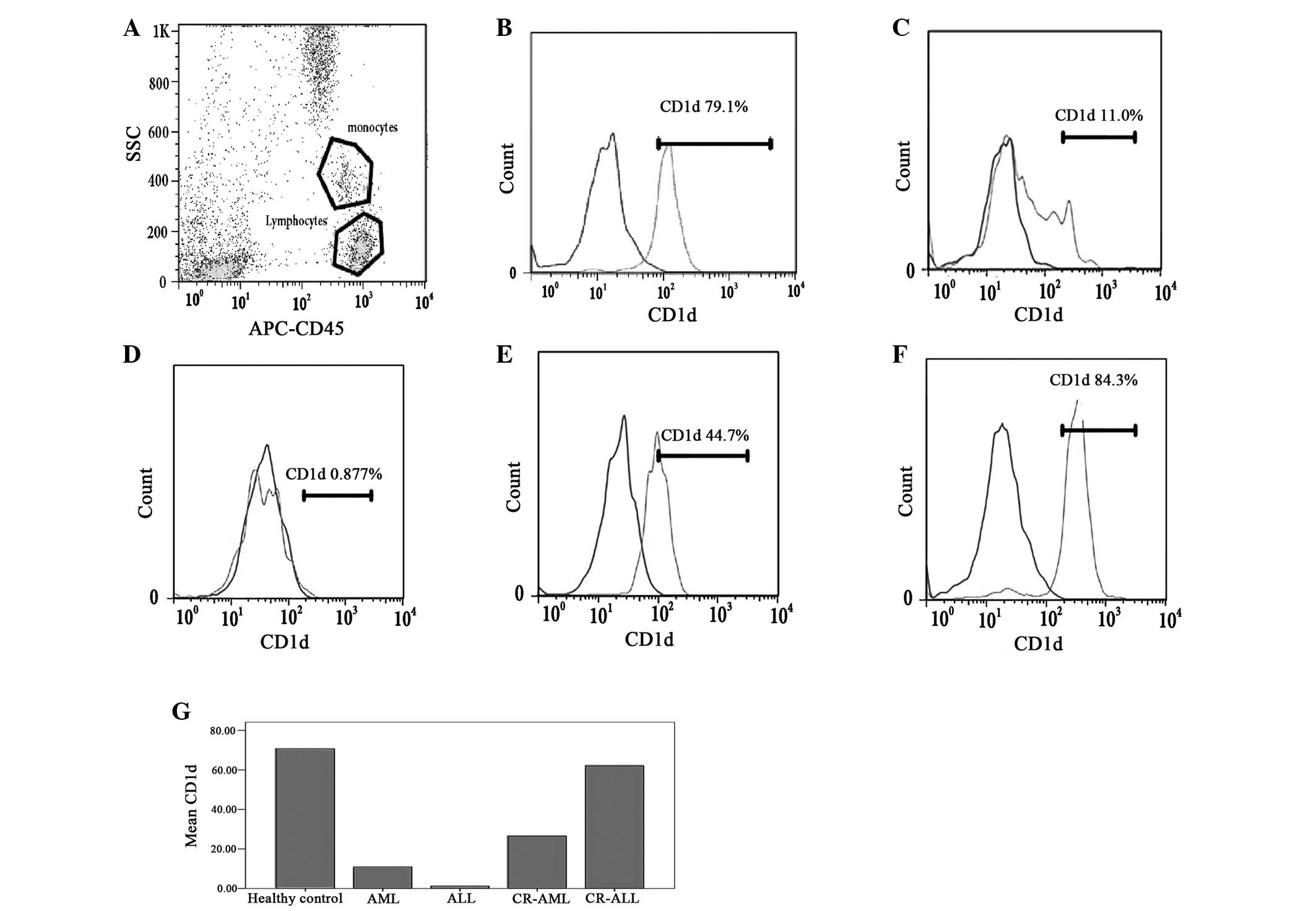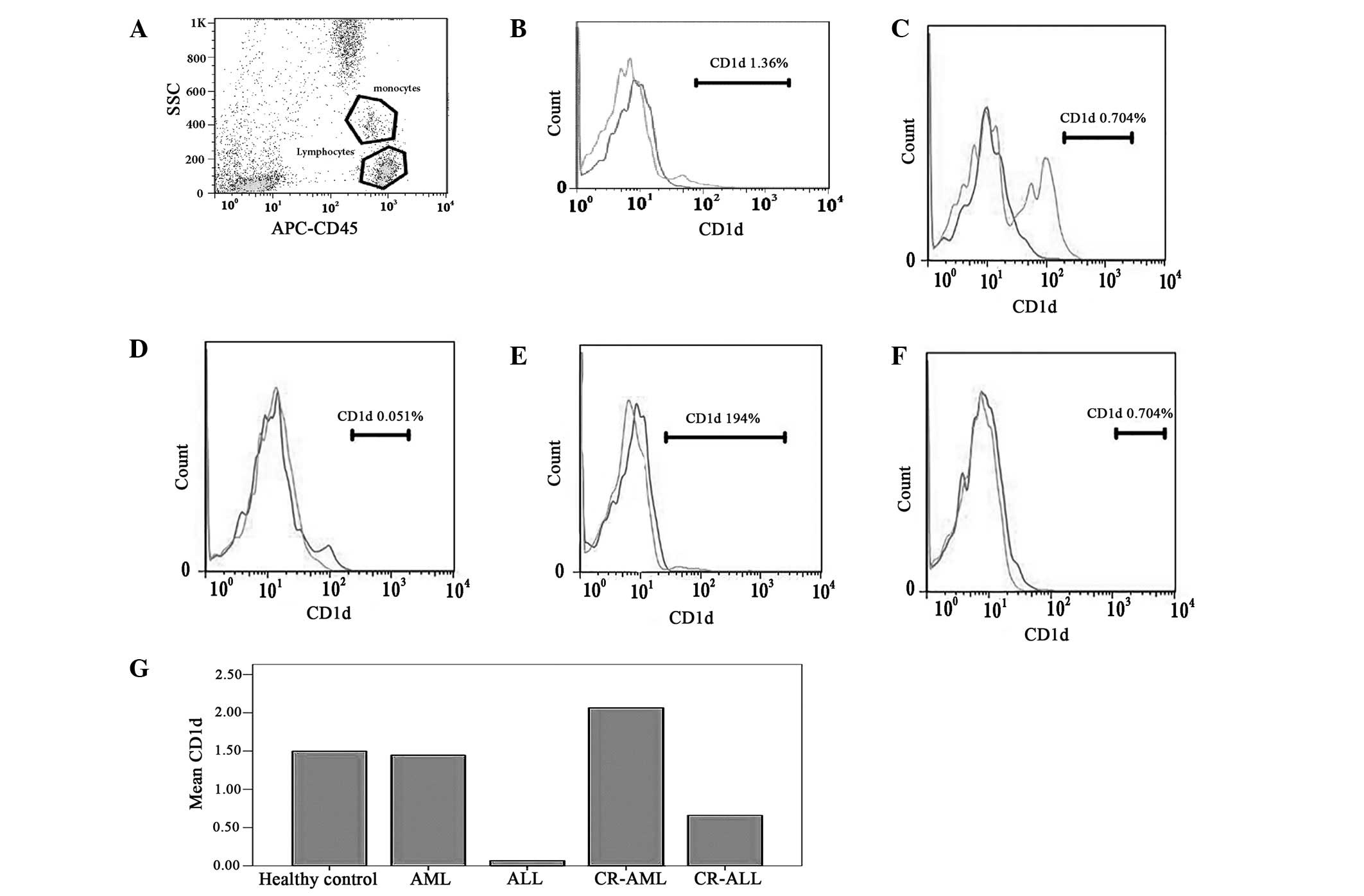|
1
|
Mellman I, Coukos G and Dranoff G: Cancer
immunotherapy comes of age. Nature. 480:480–489. 2011.
|
|
2
|
Bennett JM, Catovsky D, Daniel MT, et al:
Proposals for the classification of the acute leukaemias.
French-American-British (FAB) co-operative group. Br J Haematol.
33:451–458. 1976.
|
|
3
|
Horowitz MM, Gale RP, Sondel PM, et al:
Graft-versus-leukemia reactions after bone marrow transplantation.
Blood. 75:555–562. 1990.
|
|
4
|
Görgün G, Holderried TA, Zahrieh D,
Neuberg D and Gribben JG: Chronic lymphocytic leukemia cells induce
changes in gene expression of CD4 and CD8 T cells. J Clin Invest.
115:1797–1805. 2005.
|
|
5
|
Görgün G, Ramsay AG, Holderried TA, et al:
E(mu)-TCL1 mice represent a model for immunotherapeutic reversal of
chronic lymphocytic leukemia-induced T-cell dysfunction. Proc Natl
Acad Sci USA. 106:6250–6255. 2009.
|
|
6
|
Dustin ML and Cooper JA: The immunological
synapse and the actin cytoskeleton: molecular hardware for T cell
signaling. Nat Immunol. 1:23–29. 2000.
|
|
7
|
Ramsay AG, Johnson AJ, Lee AM, et al:
Chronic lymphocytic leukemia T cells show impaired immunological
synapse formation that can be reversed with an immunomodulating
drug. J Clin Invest. 118:2427–2437. 2008.
|
|
8
|
Godfrey DI, Hammond KJ, Poulton LD, Smyth
MJ and Baxter AG: NKT cells: facts, functions and fallacies.
Immunol Today. 21:573–583. 2000.
|
|
9
|
Joyce S: CD1d and natural T cells: how
their properties jump-start the immune system. Cell Mol Life Sci.
58:442–469. 2001.
|
|
10
|
Pittet MJ, Speiser DE, Valmori D,
Cerottini JC and Romero P: Cutting edge: cytolytic effector
function in human circulating CD8+ T cells closely correlates with
CD56 surface expression. J Immunol. 164:1148–1152. 2000.
|
|
11
|
Ohkawa T, Seki S, Dobashi H, et al:
Systematic characterization of human CD8+ T cells with natural
killer cell markers in comparison with natural killer cells and
normal CD8+ T cells. Immunology. 103:281–290. 2001.
|
|
12
|
Kronenberg M: Toward an understanding of
NKT cell biology: progress and paradoxes. Annu Rev Immunol.
23:877–900. 2005.
|
|
13
|
Bendelac A, Savage PB and Teyton L: The
biology of NKT cells. Annu Rev Immunol. 25:297–336. 2007.
|
|
14
|
Taniguchi M, Tashiro T, Dashtsoodol N,
Hongo N and Watarai H: The specialized iNKT cell system recognizes
glycolipid antigens and bridges the innate and acquired immune
systems with potential applications for cancer therapy. Int
Immunol. 22:1–6. 2010.
|
|
15
|
Godfrey DI and Kronenberg M: Going both
ways: immune regulation via NKT cells. J Clin Inv.
114:13792004.
|
|
16
|
Van der Vliet HJ, Molling JW, von Blomberg
BM, et al: The immunoregulatory role of CD1d-restricted natural
killer T cells in disease. Clin Immunol. 112:8–23. 2004.
|
|
17
|
Nowak M and Stein-Streilein J: Invariant
NKT cells and tolerance. Int Rev Immunol. 26:95–119. 2007.
|
|
18
|
Matsuda JL, Mallevaey T, Scott-Browne J
and Gapin L: CD1d-restricted iNKT cells, the ‘Swiss-Army knife’ of
the immune system. Curr Opin Immunol. 20:358–368. 2008.
|
|
19
|
Parekh VV, Wilson MT and Van Kaer L:
iNKT-cell responses to glycolipids. CritRevImmunol. 25:183–213.
2005.
|
|
20
|
Salio M, Silk JD and Cerundolo V: Recent
advances in processing and presentation of CD1 bound lipid
antigens. Curr Opin Immunol. 22:81–88. 2010.
|
|
21
|
Venkataswamy MM and Porcelli SA: Lipid and
glycolipid antigens of CD1d-restricted natural killer T cells.
Semin Immunol. 22:68–78. 2010.
|
|
22
|
Swann JB, Coquet JM, Smyth MJ and Godfrey
DI: CD1-restricted T cells and tumor immunity. Curr Top Microbiol
Immunol. 314:293–323. 2007.
|
|
23
|
Berzofsky JA and Terabe M: The contrasting
roles of NKT cells in tumor immunity. Curr Mol Med. 9:667–672.
2009.
|
|
24
|
Dhodapkar MV: Harnessing human CD1d
restricted T cells for tumor immunity: progress and challenges.
Front Biosci. 14:796–807. 2009.
|
|
25
|
Hegde S, Fox L, Wang X and Gumperz JE:
Autoreactive natural killer T cells: promoting immune protection
and immune tolerance through varied interactions with myeloid
antigen-presenting cells. Immunology. 130:471–483. 2010.
|
|
26
|
Exley M, Garcia J, Wilson SB, et al: CD1d
structure and regulation on human thymocytes, peripheral blood T
cells, B cells and monocytes. Immunology. 100:37–47. 2000.
|
|
27
|
Kitamura H, Iwakabe K, Yahata T, et al:
The natural killer T(NKT) cell ligand alpha-galactosylceramide
demonstrates its immunopotentiating effect by inducing interleukin
(IL)-12 production by dendritic cells and IL-12 receptor expression
on NKT cells. J Exp Med. 189:1121–1128. 1999.
|
|
28
|
Tomura M, Yu WG, Ahn HJ, et al: A novel
function of Valpha14+CD4+NKT cells:
stimulation of IL-12 production by antigen-presenting cells in the
innate immune system. J Immunol. 163:93–101. 1999.
|
|
29
|
Hayakawa Y, Takeda K, Yagita H, et al:
Differential regulation of Th1 and Th2 functions of NKT cells by
CD28 and CD40 costimulatory pathways. J Immunol. 166:6012–6018.
2001.
|
|
30
|
Berzins SP, Smyth MJ and Baxter AG:
Presumed guilty: natural killer T cell defects and human disease.
Nat Rev Immunol. 11:131–142. 2011.
|
|
31
|
Troy AJ, Summers KL, Davidson PJT,
Atkinson CH and Hart DNJ: Minimal recruitment and activation of
dendritic cells within renal cell carcinoma. Clin Cancer Res.
4:585–593. 1998.
|
|
32
|
Enk AH, Jonuleit H, Saloga J and Knop J:
Dendritic cells as mediators of tumor-induced tolerance in
metastatic melanoma. Int J Cancer. 73:309–316. 1997.
|
|
33
|
Nestle FO, Burg G, Fäh J, Wrone-Smith T
and Nickoloff BJ: Human sunlight-induced
basal-cell-carcinoma-associated dendritic cells are deficient in T
cell co-stimulatory molecules and are impaired as
antigen-presenting cells. Am J Pathol. 150:641–651. 1997.
|
|
34
|
Gabrilovich DI, Corak J, Ciernik IF,
Kavanaugh D and Carbone DP: Decreased antigen presentation by
dendritic cells in patients with breast cancer. Clin Cancer Res.
3:483–490. 1997.
|
|
35
|
Guo W, Xing C, Dong A, et al: Numbers and
cytotoxicities of CD3+CD56+ T lymphocytes in peripheral blood of
patients with acute myeloid leukemia and acute lymphocytic
leukemia. Cancer Biol Ther. 14:916–921. 2013.
|
|
36
|
Spada FM, Borriello F, Sugita M, et al:
Low expression level but potent antigen presenting function of CD1d
on monocyte lineage cells. Eur J Immunol. 30:3468–77. 2000.
|
|
37
|
Kurts C, Robinson BW and Knolle PA:
Cross-priming in health and disease. Nat Rev Immunol. 10:403–414.
2010.
|
|
38
|
Matzinger P: The danger model: a renewed
sense of self. Science. 296:301–5. 2002.
|
|
39
|
Burgdorf S, Schölz C, Kautz A, Tampé R and
Kurts C: Spatial and mechanistic separation of cross-presentation
endogenous antigen presentation. Nature Immunology. 9:558–566.
2008.
|
|
40
|
East JE, Sun W and Webb TJ: Artificial
antigen presenting cell (aAPC) mediated activation and expansion of
natural killer T cells. J Vis Exp. 29:43332012.
|
|
41
|
Webb TJ, Bieler JG, Schneck JP and Oelke
M: Ex vivo induction and expansion of natural killer T cells by
CD1d1-Ig coated artificial antigen presenting cells. J Immunol
Methods. 31:38–44. 2009.
|
|
42
|
Webb TJ, Giuntoli RL II, Rogers O, Schneck
J and Oelke M: Ascites specific inhibition of CD1d-mediated
activation of natural killer T cells. Clin Cancer Res. 1:7652–7658.
2008.
|
|
43
|
Inaba H, Greaves M and Mullighan CG: Acute
lymphoblastic leukaemia. Lancet. 381:1943–1955. 2013.
|
|
44
|
Fais F, Tenca C, Cimino G, et al: CD1d
expression on B-precursor acute lymphoblastic leukemia subsets with
poor prognosis. Leukemia. 19:551–556. 2005.
|












